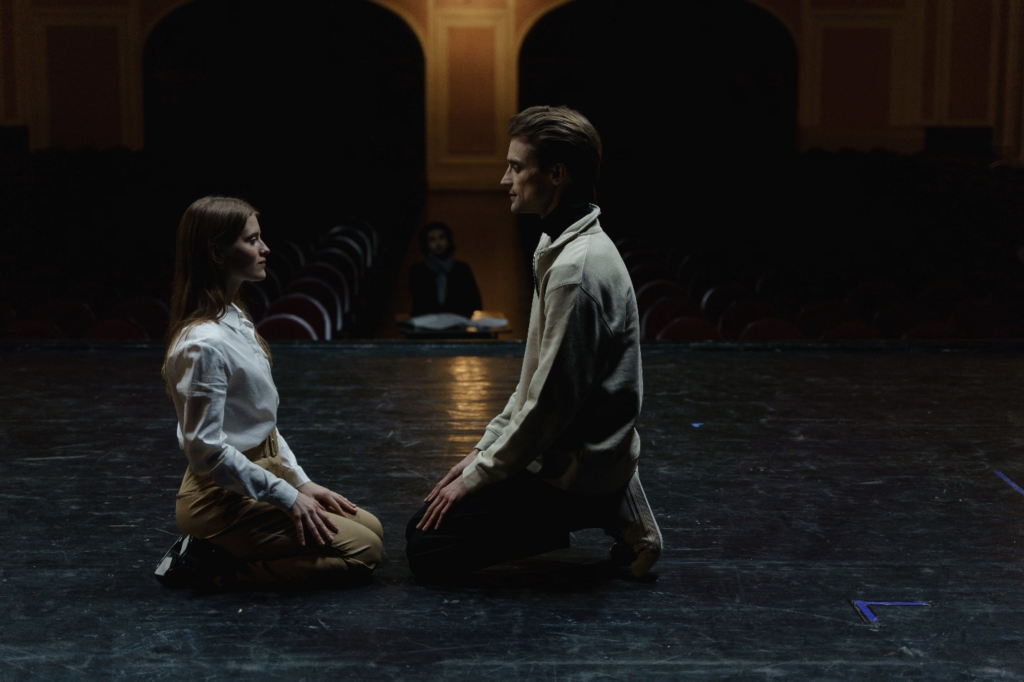Sign language is a rich and expressive means of communication used by deaf people worldwide. Sign language uses visually transmitted sign patterns (manual communication, body language, and lip patterns) to communicate meaning rather than acoustically conveyed sound patterns—simultaneously combining hand shapes, orientation and movement of the hands, arms, or body, and facial expressions that communicate fluidly a speaker’s thoughts. Sign languages are frequently developed among deaf communities, which may include interpreters, friends and families of deaf persons, and those who are deaf or hard of hearing themselves.
Wherever communities of deaf people exist, sign languages develop. In fact, their complex spatial grammars are markedly different from the grammars of spoken languages. Hundreds of sign languages are in use around the world and are at the cores of local Deaf cultures. Some sign languages have obtained some form of legal recognition, while others have no status at all. Over the years, sign language has gained recognition in various forms of literature and media, contributing to a more inclusive and diverse portrayal of deaf culture and experiences.
Authors may now capture the elegance and nuance of this visual language thanks to the use of sign language into textual works. For deaf characters in literary works, sign language frequently provides a potent way of expression. In Mark Haddon’s book “The Curious Incident of the Dog in the Night-Time,” a protagonist with autism who communicates mostly through sign language serves as one significant illustration. The use of sign language not only emphasises the character’s distinctive viewpoint but also stresses the value of nonverbal forms of communication.

Furthermore, sign language literature has emerged as a unique genre, with poets and storytellers creating storylines tailored exclusively for sign language performance. These works frequently address hearing impairment, identity, and the cultural components of sign language. They give deaf people an opportunity to express themselves openly and share their tales with a larger audience.
Sign language has made tremendous advances in the area of visual media in recent years. The value of sign language as a storytelling method has been recognised by filmmakers and television producers, leading in the inclusion of deaf characters and the use of sign language as a narrative tool. Guillermo del Toro’s critically praised film “The Shape of Water” is one such example. The story revolves around a deaf protagonist who communicates mostly via sign language, emphasising the beauty and richness of nonverbal communication.
Television productions such as “Switched at Birth” and “This Close” additionally played an important part in showcasing the deaf population and using sign language into their tales. These television programs provide insight into the lives, problems, and achievements of deaf characters, bridging the divide between the hearing and deaf worlds. The incorporation of sign language in mainstream media not only raises awareness but also promotes the concept of linguistic and cultural diversity.

Documentaries and short films have proven to be powerful platforms for showcasing the realities of deaf individuals and the significance of sign language. Films like “Sound and Fury” and “Children of a Lesser God” shed light on the experiences of deaf individuals and their connection to sign language. These documentaries explore themes such as identity, deaf education, and the ongoing debate surrounding cochlear implants, providing a deeper understanding of the deaf community and their linguistic choices.
Short films have also arisen as a creative method for expressing deaf experiences. To express dramatic storylines without the need of spoken conversation, these films frequently depend on visual storytelling and the usage of sign language. Such videos highlight the unique perspectives and experiences of deaf people, increasing empathy and understanding among viewers.
Sign language depiction in literature and media has had a significant influence on society’s image of deafness and deaf culture. These depictions challenge established assumptions of language and enhance our awareness of human variety by presenting sign language as a genuine and expressive mode of communication. They stress the value of inclusion, equality, and accessibility in all modes of communication.

Furthermore, deaf characters and their experiences in literature and media play an important role in promoting empathy and breaking down barriers. When audiences are introduced to the problems, successes, and aspirations of deaf people, a more inclusive and understanding society is promoted. It tackles prejudices and misconceptions, urging viewers and readers to go past the handicap and acknowledge the deaf community’s rich culture, perseverance, and skills.
likewise, sign language representation in literature and culture has the ability to inspire and empower deaf people. When individuals find themselves mirrored in novels, films, and other forms of media, it validates their experiences and gives them a feeling of belonging. It can provide deaf people with a sense of pride, identity, and drive to embrace their language and culture, building a good self-image and supporting self-advocacy.
The impact of sign language representation goes beyond the deaf community. It raises awareness among the general public about the importance of accessibility and the need for inclusive communication. By highlighting the beauty and significance of sign language, literature and media contribute to a more inclusive society that values and respects linguistic diversity. However, it is important to note that the representation of sign language and deaf characters in literature and media is not without challenges. Inaccurate or stereotypical portrayals can perpetuate harmful stereotypes or reinforce limited perspectives. It is crucial for creators to consult with the deaf community, hire deaf actors and filmmakers, and ensure authentic representation and storytelling.
Furthermore, there is still a long way to go in terms of sign language representation in literature and media, both in number and quality. While significant progress has been made in recent years, additional efforts are needed to elevate deaf voices, diversify storylines, and create more chances for deaf producers to express their tales. This may be accomplished by increasing financing, assisting deaf filmmakers and authors, and establishing venues dedicated to promoting sign language literature and media.
Finally, the representation of sign language in literature, cinema, and other forms of media has resulted in substantial shifts in the portrayal of deaf characters and their lives. It is an effective instrument for fostering inclusion, creating awareness, and challenging cultural preconceptions of deafness. These representations promote empathy, understanding, and respect for linguistic and cultural diversity by showing the beauty and richness of sign language. Moving forward, it is critical to continue supporting and amplifying deaf voices, guaranteeing honest representation, and aiming for a more inclusive and accessible society for everyone.
Sources
- https://psychology.fandom.com/wiki/Sign_language
- https://www.jstor.org/stable/412763
- https://www.vox.com/platform/amp/culture/2017/9/12/16288080/shape-of-water-del-toro-review-best-picture
- https://en.m.wikipedia.org/wiki/American_Sign_Language_literature
- https://www.hearinglikeme.com/deaf-inclusion-in-media-influences-lead-to-spike-in-sign-language/amp/




